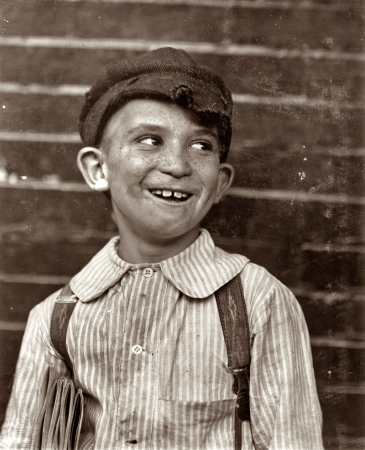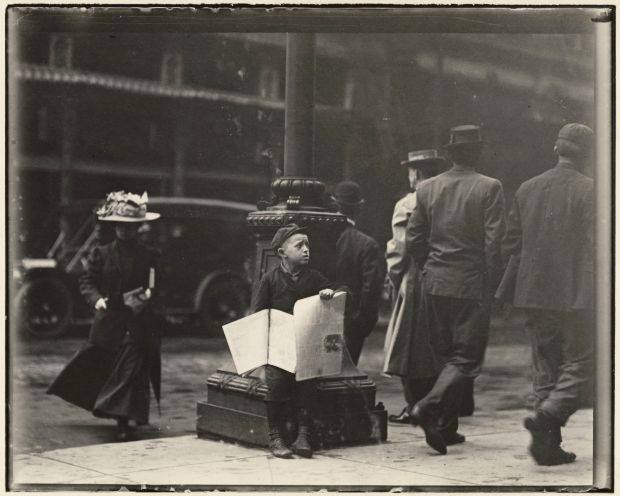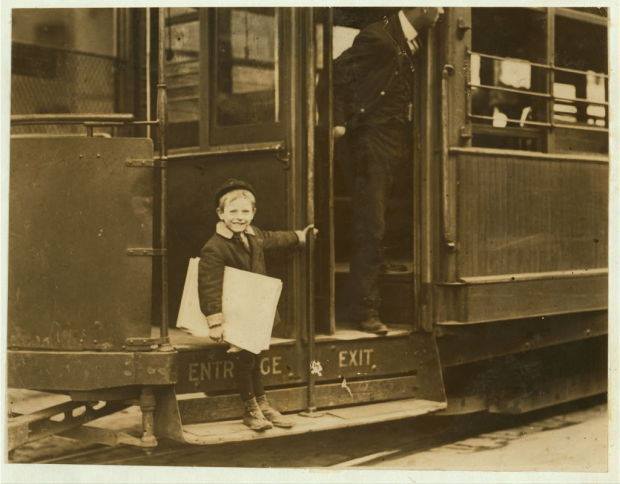"Extra! Extra!" Read all about the St. Louis Newsies!
- msajaminor
- Apr 4, 2019
- 3 min read
Updated: Nov 17, 2023
During the Industrial Revolution of the 1800s, many families were living in impoverished conditions around the country. Children, as young as 5 years old, often had to work alongside their parents for long hours and lower wages.
(Click photos for more information.)
After an influx of opportunity-seeking immigrants in the 1840s brought more children to America for labor, the problem got worse. These families were used to hard work, hard times and children "earning their keep."
By 1900, 2 million children were working in textile mills, factories and even coal mines, so that their families could survive. Working in these conditions was dangerous, and many children, who were also not receiving adequate medical care, were often mutilated and abused.
In 1903, Lewis Wickes Hine traveled around the country documenting these child laborers. Included in his photography were the St. Louis newsboys. These children, many of them orphans, were being used as foot soldiers of the newspaper rivalry. In an era before the internet, nationwide events were front page news and most downtown St. Louisans got these updates during their daily morning routine... via a newsboy on the way to work. Boys, from many different backgrounds and languages, battled for these turf street corners, sometimes physically. They smoked cigarettes and gambled. They were not able to go to school to learn how to read and write, making labor jobs the only jobs for their future. By advocating for the education of these children and (soon-to-be future adult citizens), activists demanded that they be educated so that they would be valuable to society as adults.
(Click to view these legendary images!)
Ms. Ina Tyler, of the Washington University, St. Louis School of Social Economy,
investigated the St. Louis newsboys in 1910 and found that of:

50 newsboys (under 11)
43 gambled
42 went to cheap shows
23 smoked
100 newsboys (age 11-16)
86 gambled
92 went to cheap shows
76 smoked


Some of the orphaned newsboys were able to find shelter when Father Dunne expanded from his small, row house orphanage at 1013 Selby Place to a 2-story brick building on 3010 Washington Avenues for 125 boys. According to the 1930 census, the boys at Fr. Dunne’s Home represented many nationalities: Irish, English, Scots, French, German, Spanish, Polish, and Italian.
Most news branches employed children of all races.
They would charge them per bundle, and the boys - sales experts - would go to the busiest intersections, streetcars, saloons, and brothels, shouting the most enticing headlines in order to ensure all of their papers were sold, as they were forced to eat the cost of unsold papers. It could get very violent and street fights occurred, sometimes with younger children against older children.
The identity of one newsboy, photographed by Hine at the intersection of Jefferson and Washington, remains a mystery. Joe Manning, a retired social worker and journalist in Massachusetts, has attempted to identify many of these children in his blog Mornings On Maple Street.
Lewis Hines' caption (on the photo at Union Dairy) reads only:
Truants selling papers at Jefferson & Washington 11 A.M. Monday May 9th, 1910.
Smallest boy is Marvin Adams, 2637 Washington Ave. Said he got his papers “off’n de other feller.”
Other boy is Owen McCormack, 2651 Washington Avenue. Location: St. Louis, Missouri.
In 1924, Congress proposed a constitutional amendment prohibiting child labor, but the states did not ratify it. Then, in 1938, Congress passed the Fair Labor Standards Act. Not until the Great Depression (1929) did child labor decrease to ensure that the adult population had enough employment.
More St. Louis Newsies pictures! Click pics for photo information!
INFO SOURCES:
*Child Labor in City Streets By Edward Nicholas Clopper
* Mornings on Maple Street








































































































